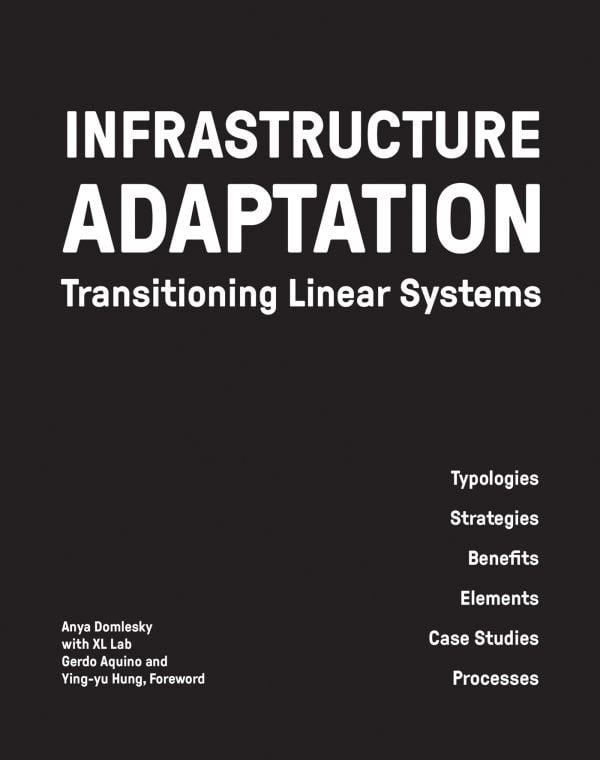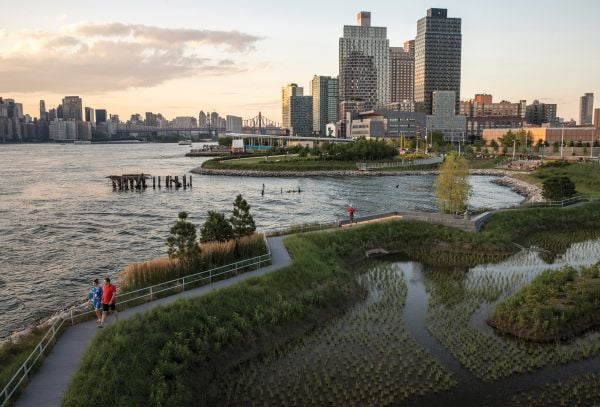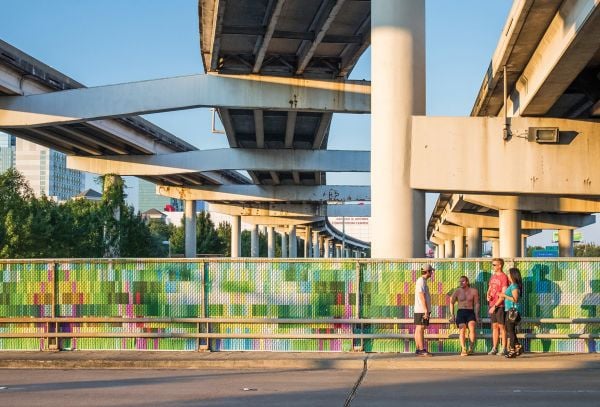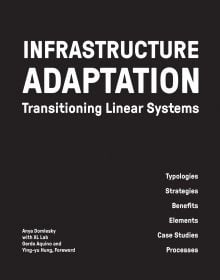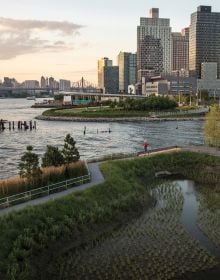Infrastructure Adaptation
Transitioning Linear Systems
- Infrastructure adaptation, an emergent project type in urban design, is mined and ordered into typologies, strategies, benefits, elements, case studies, and processes in order to better enable a transition to low-carbon cities
- This book is the first to collect impactful linear interventions and name the type “infrastructure adaptation”
- It gives designers and planners options in adapting and revitalising urban areas using transportation infrastructure, and a tool they can take to their partners in city leadership
- The book expands the discourse on sustainability and carbon to urban design, focusing on reuse, repurposing, and reprogramming of single-use/single purpose infrastructure assets into ones more broadly beneficial, versus new construction or demolition
- The book makes novel contributions to the field of urban design by providing a landscape approach to structuring city form and growth processes through transportation and soft, green, social infrastructure which will be of interest to architects, planners, landscape architects and others
Transportation infrastructure is typically big, central, connective, dramatic, and public. Because of these attributes, infrastructure adaptation projects can serve to improve carbon outcomes with urban design while catalysing positive economic change. By transforming transportation corridors through adaptive reuse, retrofitting, or right sizing, cities can provide low carbon mobility, densify urban form, and attract residents who value livability–in addition to garnering the traditional benefits of open space like community building, improved mental and physical health, biodiversity, and climate adaptation.
This book brings together port, river, rail, and road infrastructure adaptation interventions into a typology, highlighting strategies, benefits, elements, and processes in common. Each of the 60 built project examples, by a range of international landscape architects, urban designers, and architects, demonstrate different ways engineered systems evolve from monofunctional megastructures to multi-functional platforms designed to support living systems. This project continues practice-based commitments to large-scale landscapes, anticipating near future conditions in the built environment, analyzing design performance, and addressing emerging complexities and unprecedented challenges.
- Publisher
- ORO Editions
- ISBN
- 9781966515333
- Publish date
- 12th Jan 2026
- Binding
- Hardback
- Territory
- World excluding USA, Canada, Australasia, Asia non-exclusive
- Size
- 241 mm x 178 mm
- Pages
- 450 Pages
- Illustrations
- 400 color
Distributed by ACC Art Books
Our Catalogues
Please log-in or create an account to see your recent items.
